A guide to how to design and install CCTV equipment. Tips and advice on CCTV installation, what cameras to use, what focal range and whether to install IR.
When designing a CCTV system for a property there’s a number of different equipment options you could choose. The x4 key questions you should be asking are:
- What do I want to achieve?
- What areas do I want to cover?
- Where can I position the camera(s)?
- What quality do I need?
What do I want to achieve?
- Spot an intruder (i.e. someone posing a threat to you or your property) and deter/prevent them from doing so
- Spot an illegal action (e.g. damaging your property or stealing your stock) and deter/prevent them from doing so
- Identify a caller, intruder, someone or vehicle who has committed a criminal act
- Watch family members or staff to ensure their safety.
What areas do I want to cover and where do I position cameras?
Deciding where to cover means identifying where the threats are likely to come from. This is generally common sense but it is probably best to get additional advice from someone with previous experience or a professional. They can then advise on the positioning and types of cameras/other CCTV equipment in order to minimise installation costs and maximise effectiveness.
What quality do I need?
Image quality is a function of three basic factors:
- Camera resolution
- Focal length & position of the camera
- Available light
Camera Resolution
A camera’s resolution is determined by either the number of television lines (TVL) for standard definition systems or pixels for high definition systems. The greater the number of television lines or pixels the camera has, the higher resolution of the CCTV image. Please note that you will need a CCTV recorder capable of supporting the same resolution as your cameras.
There are some drawbacks to consider when selecting higher resolution cameras however:
- Higher resolution cameras are more expensive than lower resolution alternatives
- Higher resolution cameras require significantly more memory space to save recordings, so you either require a larger hard drive or accept that fewer days recording will be available.
- Higher resolution cameras require more bandwidth to stream video footage, which can cause slower response and refresh times when viewing CCTV across a network. High speed fibre optic broadband is recommended for High Definition CCTV systems.
Below are images showing the difference in quality from the most used resolutions for CCTV cameras:
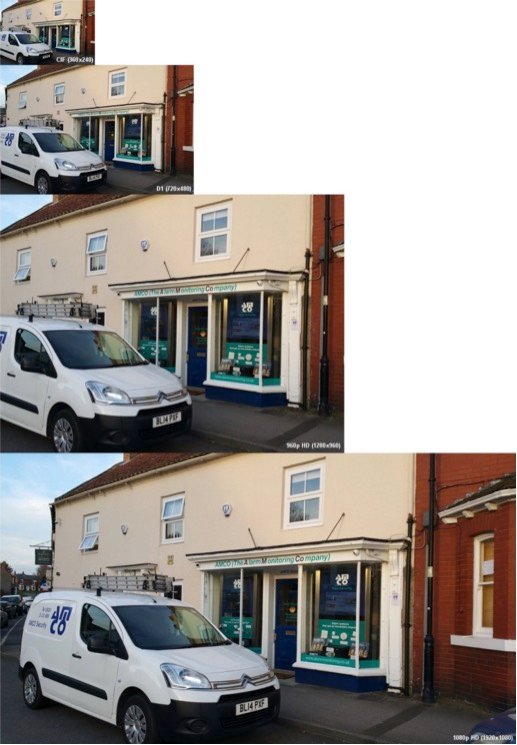
Focal Length & Position
More often than not, the focal length and position of the camera is more important than the resolution.
To observe the general area, a lower millimetre lens is required, which will give a wider viewing angle but less detail in the footage. To observe a specific location in more detail, you can use a higher millimetre lens to concentrate the footage but giving more detail.
- To identify someone or something at close range to the camera, a low millimetre lens is required
- To identify someone or something at a distance to the camera, a high millimetre lens is required
Below are images take for the 3 most common used focal lengths in CCTV at an approximate distance of 15 metres, accompanied by a bird’s eye view showing the approximate viewing angle. For reference, the cameras used are 1/3 Sony lens 420TVL resolution to show that high resolution cameras are not always required to obtain specific detail.
4mm lens
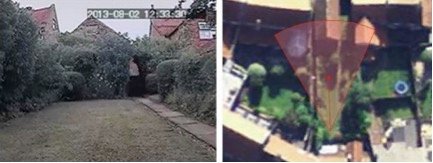
6mm lens
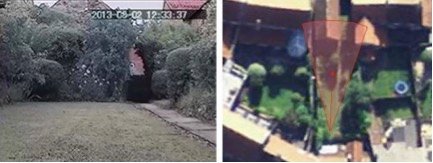
8mm lens
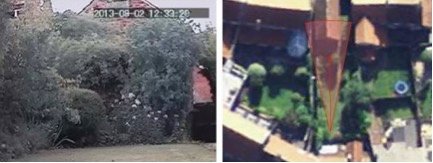
You also want to make sure you position the camera in the correct place to fulfil its purpose. For example, mounting a camera high up near the roof looking down to your front/rear garden is great for general observation purposes but completely useless if you want to identify someone. Even with High Definition, all you would achieve with this example is crisp, clear footage of the top of someone’s head (or even hat/hoodie if they are trying to hide themselves). Mounting the camera lower for a more face-on shot will of course give a much greater chance to identify who is there.
Available Light
For CCTV to be most effective, the area to be observed needs to be well lit. This is generally not an issue during daytime hours but if you need to view your CCTV in shadowy areas or at night, you may require additional lighting.
There are 2 main types of lighting generally used with CCTV:
- Infrared (IR)
- Floodlight
Advantages to Infrared (IR) light:
- Allows vision at low/no light for general observation
- No additional light pollution to disturb local residence/wildlife
- More covert viewing
- Available to use indoors or outdoors
- Less cost as many cameras have Infrared built in already
Advantages to floodlight:
- Full colour images day or night
- More detailed images compared to Infrared
- Covers a greater distance as standard compared to Infrared
- Acts as an additional deterrent
Below is a day to night comparison for Infrared and floodlight.
Infrared example
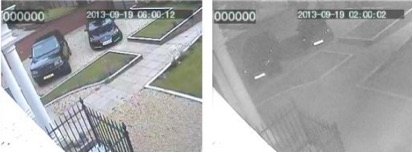
Floodlight example
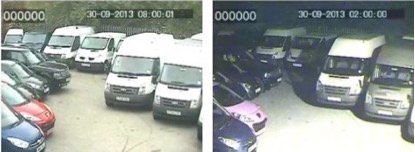


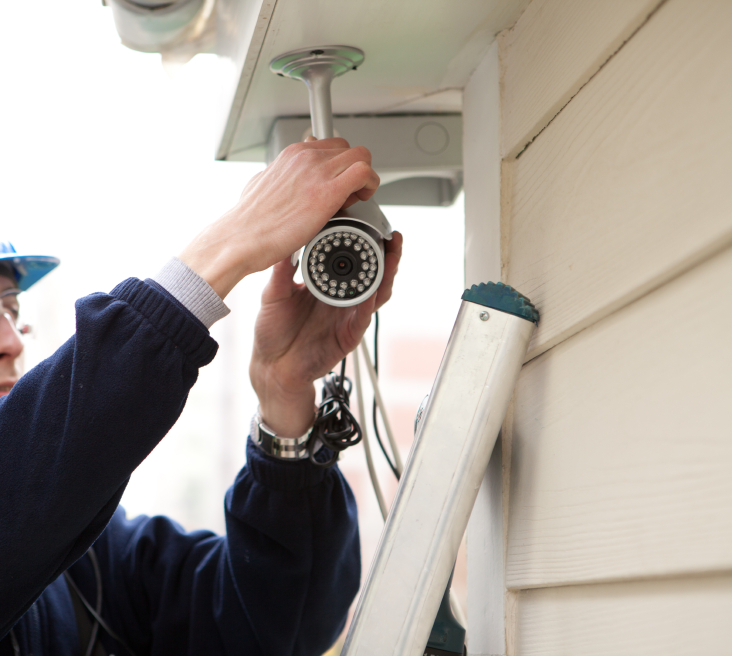
COMMENTS